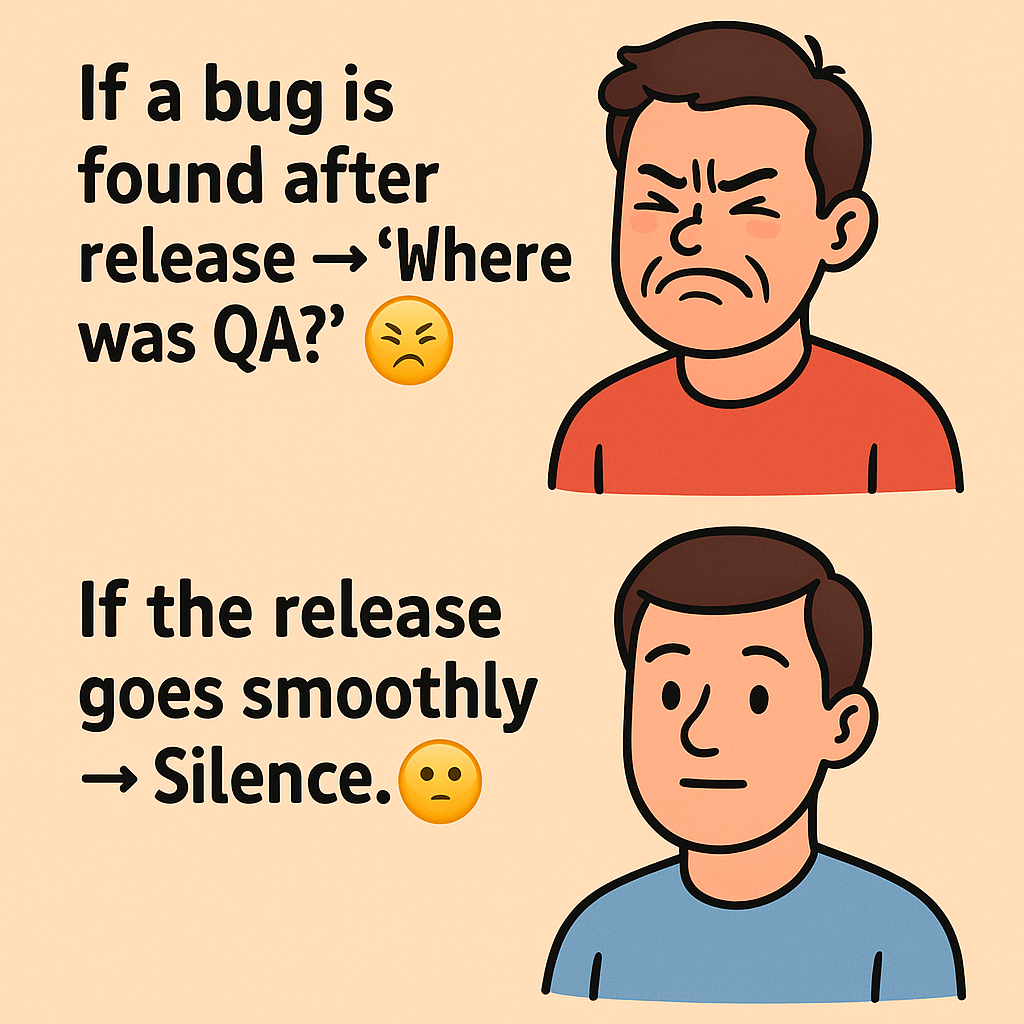In software testing, having the right data is just as important as having the right test cases. If you’re testing a banking app, you can’t do much without having accounts, balances, and transaction histories to work with.
This is where Test Data Management (TDM) becomes crucial.
📘 What is Test Data Management (TDM)?
Test Data Management (TDM) is the process of:
- Creating,
- Maintaining,
- Storing, and
- Using data specifically for software testing.
It ensures testers have access to clean, relevant, and secure test data that simulates real-world scenarios without affecting live systems.
🔎 Real-Life Analogy
Imagine testing an online shopping website. Here’s the kind of test data you’ll need:
- User accounts (names, emails, passwords)
- Products (name, price, stock count)
- Orders (status, payment type)
- Shipping info
Without this data, testing will either fail or give false results.
🎯 Why is Test Data Management Important?
| Benefits | Explanation |
|---|---|
| 🎯 Increases test accuracy | Well-prepared data helps testers find real bugs. |
| ⏱️ Saves time | Testers don’t waste time creating or searching for data. |
| 🔐 Ensures security | Sensitive info (like customer data) is hidden or masked. |
| 🔁 Supports automation | Automated tests run better with reusable data. |
| ⚙️ Boosts test coverage | Different types of data (valid, invalid, edge cases) cover more scenarios. |
🧪 Types of Test Data You’ll Use
| Type | Example | Purpose |
|---|---|---|
| Valid data | Correct username/password | Checks positive flows |
| Invalid data | Wrong password, invalid email | Tests error handling |
| Boundary data | 0, 1, 1000 items | Tests system limits |
| Null values | Empty fields | Tests mandatory validations |
| Duplicate data | Same phone number or email | Tests uniqueness validations |
🛠️ Ways to Generate Test Data
- Manual Entry:
You enter data by hand. Best for small tests.
Example: Fill out a form with sample name, email. - Copy from Production (Masked):
Real user data copied after hiding private info.
Example: Replace real names with fake ones, but keep structure. - Data Generation Tools:
Auto-generate data using tools or scripts.
Examples: Faker (Python/JS), Mockaroo, SQL scripts. - Automated Data Loaders:
Write scripts to load data directly into the database.
🔐 Test Data Security: Why It Matters
- Using real customer data in testing is risky.
- Leaks can violate privacy laws (like GDPR).
- Always mask or anonymize sensitive data.
✅ Best Practice: Replace “John Doe” with “TestUser001” and remove real emails or phone numbers.
🧩 Common Challenges in TDM
| Challenge | Explanation | Tip |
|---|---|---|
| Data duplication | Too many copies slow down testing | Use version control for data sets |
| Outdated data | Tests may fail if data is old | Automate regular data refresh |
| Environment mismatch | Data works in one test server, fails in another | Standardize environments |
| Poor data masking | Real names, emails visible | Use masking tools or scripts |
🚀 TDM Tools for Beginners
| Tool | Use Case |
|---|---|
| Mockaroo | Generate fake data (CSV, JSON, SQL) |
| Faker | Programmatically create data in Python/JS |
| Katalon TestOps | Test management + data handling |
| Delphix / Informatica | Advanced data virtualization (for enterprises) |
| PostgreSQL/MySQL scripts | Generate data using SQL for back-end tests |
🧠 Quick Tips for Fresher Testers
- ✅ Use unique and clear naming in test data. (e.g., User_Test001)
- ✅ Always document test data used in each case.
- ✅ Try to reuse test data across test cycles.
- ✅ When in doubt, ask for sample datasets from your dev team.
- ✅ Learn simple data generation tools — they will save your time.
📌 TDM in Agile and Automation
TDM plays a major role in:
- Agile testing (frequent releases = frequent test data needs)
- CI/CD pipelines (automated tests need stable and reusable data)
- Automated UI/API tests (data setup and teardown is crucial)
Example: Before each automated test, generate test users via API → run test → delete users post-test.
✅ Summary: TDM at a Glance
| Feature | Value |
|---|---|
| Definition | Managing test-specific data for quality testing |
| Importance | Ensures effective, fast, and secure testing |
| Who needs it? | Manual testers, automation engineers, QA leads |
| Must-know for | Freshers, QA interns, SDETs, Test Managers |
💬 Final Thoughts
Test Data Management may sound like a technical term, but it’s simply about being prepared with the right data before testing anything. If you’re a fresher in the QA world — learning TDM will help you become more confident, efficient, and reliable as a tester.

